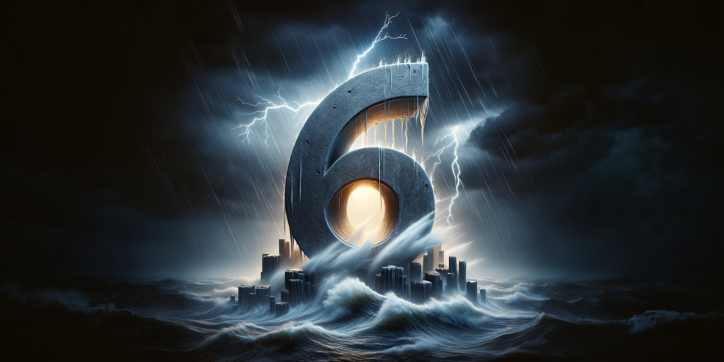Scientists Explore “Category 6″ Designation
A pair of scientists have produced a paper that explores the options of adding another category of hurricanes, suggesting that a new Category 6 should include any storm with wind speeds above 192 miles per hour.
The Saffir-Simpson scale currently goes from Category 1 to 5, and the study — published Monday in the Proceedings of the National Academy of Sciences journal — suggests adding a Category 6. A Category 5 hurricane is a storm that has sustained winds of 157 mph or greater. The new scale would cap Category 5 storms at 192 mph and anything above 192 mph would become a Category 6 hurricane.
NPR reports, “The authors of the new paper, James Kossin of the First Street Foundation and Michael Wehner of the Lawrence Berkeley National Laboratory, have been studying the effects of climate change on hurricanes for decades. They propose that Category 5 should include hurricanes with maximum sustained winds of 157 to 192 miles per hour, and that a new Category 6 should include any storm with wind speeds above 192 miles per hour.
“Under the new scale, Category 6 hurricanes would be exceedingly rare right now. For example, it might apply to 2013′s Typhoon Haiyan devastated the Philippines with wind speeds around 195 miles per hour. In fact, scientists in Taiwan argued at the time that Haiyan necessitated a new category designation.
“Four other storms since 2013 would qualify for Category 6 status, including 2015′s Hurricane Patricia, which hit Mexico, and three typhoons that formed near the Philippines in 2016, 2020 and 2021.”
The paper notes, “Global warming leads to more intense tropical cyclones [TCs]. Three separate lines of evidence from both observations and models suggest that the open endedness of the 5th category of the Saffir–Simpson hurricane wind scale becomes increasingly problematic for conveying wind risk in a warming world. We investigate considering the extension to a 6th category of the Saffir–Simpson hurricane wind scale to communicate that climate change has caused the winds of the most intense TCs to become significantly higher.
“The Saffir–Simpson scale for categorizing damage based on the wind intensity of TCs was introduced in the early 1970s and remains the most commonly used metric for public communication of the level of wind hazard that a TC poses. Because the scale is open-ended and does not extend beyond category 5 [70 m/s windspeed or greater], the level of wind hazard conveyed by the scale remains constant regardless of how far the intensity extends beyond 70 m/s.”
Read More About
Category: All


